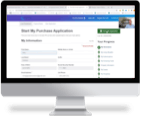We’ve written in this space before about the importance of sharing industry data to train AI models that will benefit all industry players and the borrowers we serve. However, there are additional benefits that come from aggregating large pools of data, and that is insights that come from analysis of very large data sets.
There are some examples where this is happening in our industry today, perhaps the best known is the MBA STRATMOR peer group studies, where the nation’s largest lenders share anonymized data to reveal industry cost and profitability information. These benchmarks have proven very useful to companies of all sizes across the industry.
Another example is the Home Mortgage Disclosure Data collected by the federal government. This data provides a good view of the industry from a 30,000-foot level but can also be used to drill down to the performance of specific lenders.
There are other large pools of industry data that haven’t yet produced the insight that is surely hiding within them. One example is loan data collected by the nation’s largest investors.
For the past five years, every lender selling a loan to Fannie Mae or Freddie Mac has been using the same data standard to submit their loan data. This represents an incredible opportunity.
Unlocking the insight hiding in industry data
All this loan data, lined up and normalized according to the requirements in the Uniform Residential Loan Application dataset, is now sitting in a government eVault.
What industry insights are hiding in this data?
And what about all the data collected by the U.S. Department of Housing and Urban Development? HUD also has very strict rules for the way loan data must be presented for the loans it insures.
The Veterans Administration also has a very large database of past loan data.
These very large datasets are huge opportunities for the industry. Not only in terms of the annual reports these agencies make available to the public, but also for their use in training the next generation of AI models.
The fact that our industry data is now so uniform, thanks to the requirements of the government and the secondary market, makes it fertile ground for growing future smart technologies that can reveal a better process for the industry and the borrowers it serves.
Getting access to this data won’t be easy, as it’s loaded with sensitive consumer data. The government will work to ensure that this information is not used for nefarious purposes, as it should.
But just think of the opportunity if we could just tap that resource. It’s worth working toward.
By Jim Rosen, EVP, Services at Mortgage Cadence
Want more?
Follow us on LinkedIn to be notified when our next article is released.
Media Contacts
Mortgage Cadence:
Alison Flaig
VP, Marketing
(919) 906-9738



